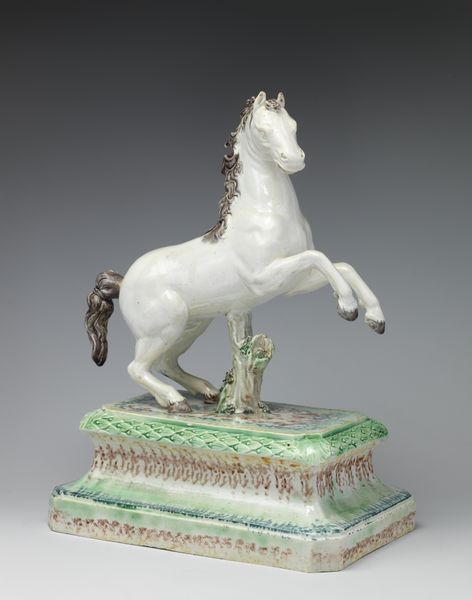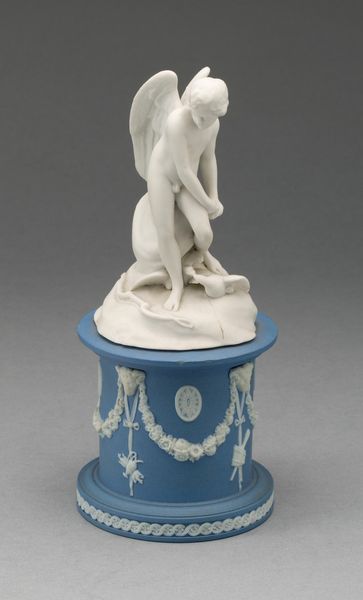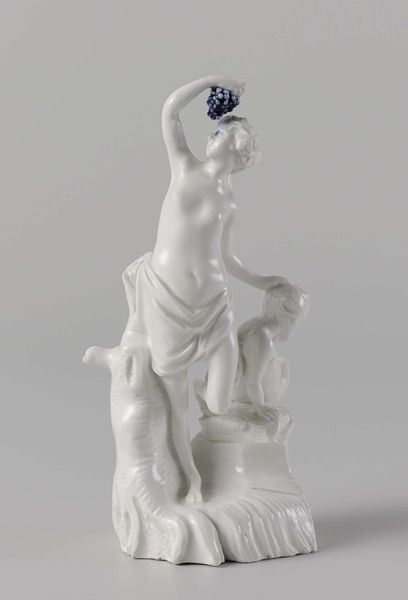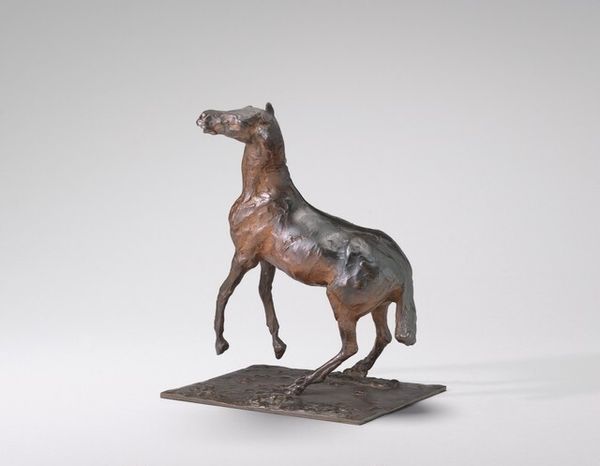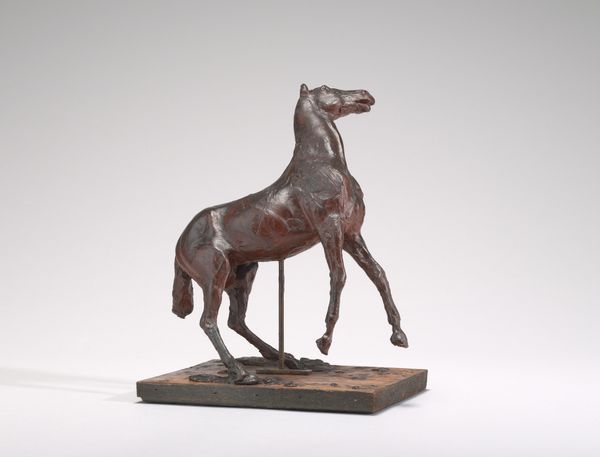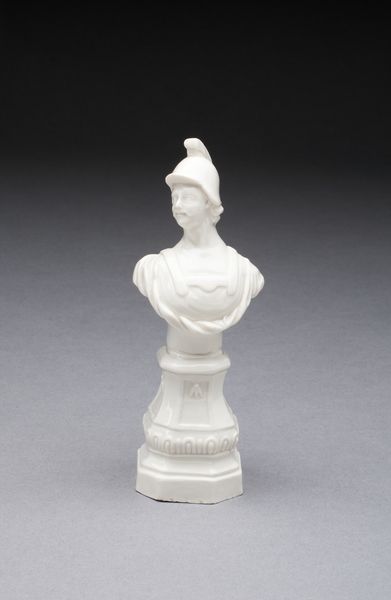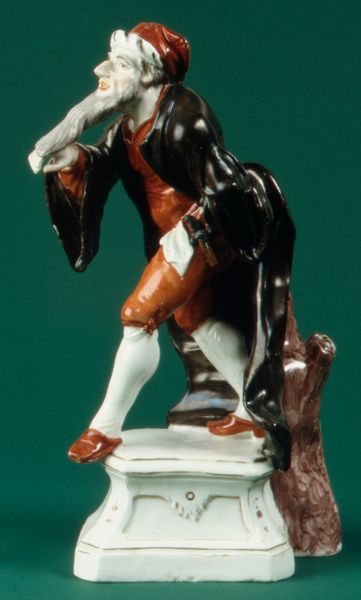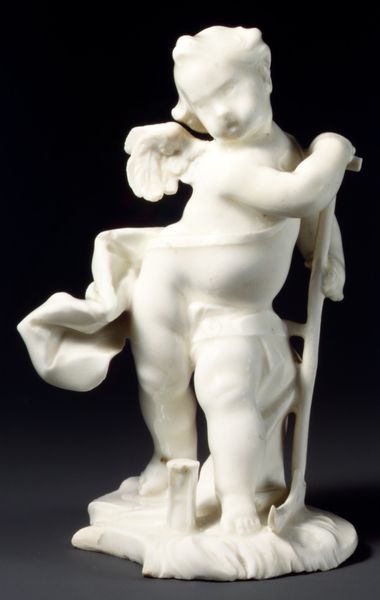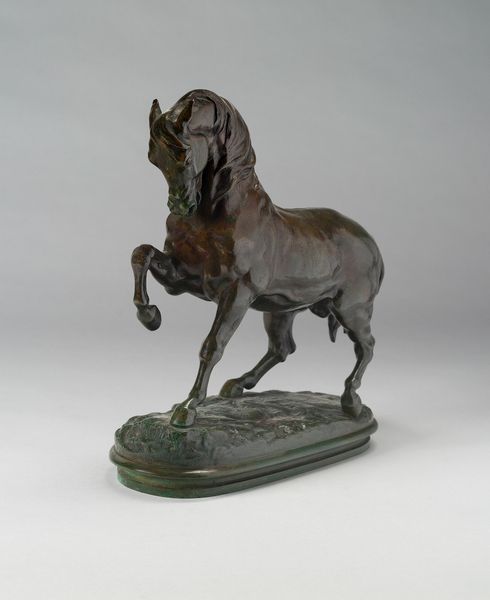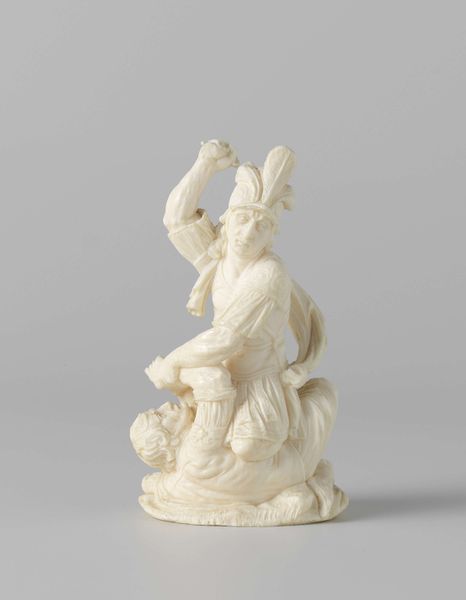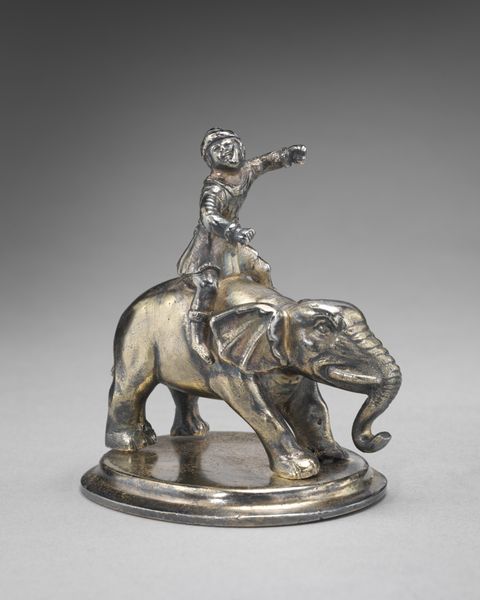
ceramic, sculpture
#
portrait
#
neoclacissism
#
ceramic
#
figuration
#
geometric
#
sculpture
#
decorative-art
Dimensions: 6.7 × 5.6 cm (2 5/8 × 2 3/16 in.)
Copyright: Public Domain
Editor: This is an exquisite ceramic sculpture titled "Chess Piece: Knight," dating back to the 19th century, from the Wedgwood Manufactory. I am really struck by the stark white figure against that pastel blue base, so simple and stately. What's your read on this? Curator: I see a powerful negotiation of status and representation characteristic of Neoclassical aspirations. While seemingly a decorative piece, its ties to both class and gender merit unpacking. Chess, even today, carries connotations of strategy, intellect, and power traditionally associated with the male domain. Editor: Ah, that's an interesting point. It does seem like a very gendered depiction. Curator: Precisely. Now, consider the figure riding the horse. While the image of a woman on horseback might superficially invoke notions of freedom or nobility, within the rigid social structure of the 19th century, it's worth questioning how this imagery participates in – or potentially challenges – the restricted roles assigned to women of the era. Is she an active participant, or simply a figurehead? And what is her access to that freedom of movement that the horse embodies? Editor: So, you're saying that it's not just a beautiful object, but that it encapsulates social dynamics related to class and gender? Curator: Absolutely. Moreover, let's consider who owned such objects. Decorative arts like these were typically found in affluent households, further solidifying their connection to power structures. It invites reflection on art as both a product and a perpetuator of its socio-historical context. Editor: That's so insightful! I will never look at a chess piece the same way again. Thanks for opening my eyes. Curator: It's crucial to remember that art rarely exists in a vacuum. Engaging with its historical context reveals its multi-layered relationship with society and its complex implications.
Comments
No comments
Be the first to comment and join the conversation on the ultimate creative platform.
